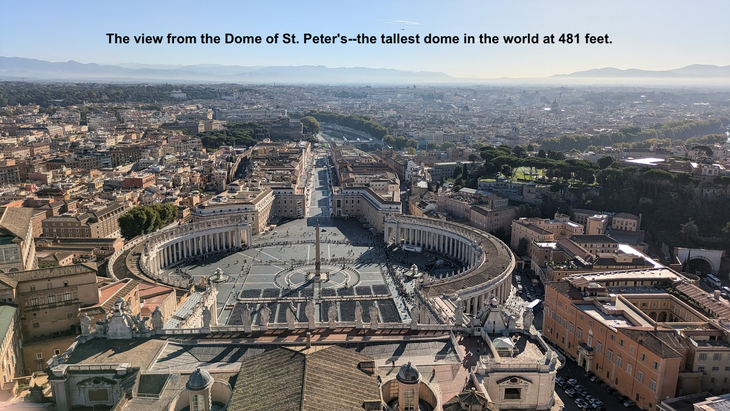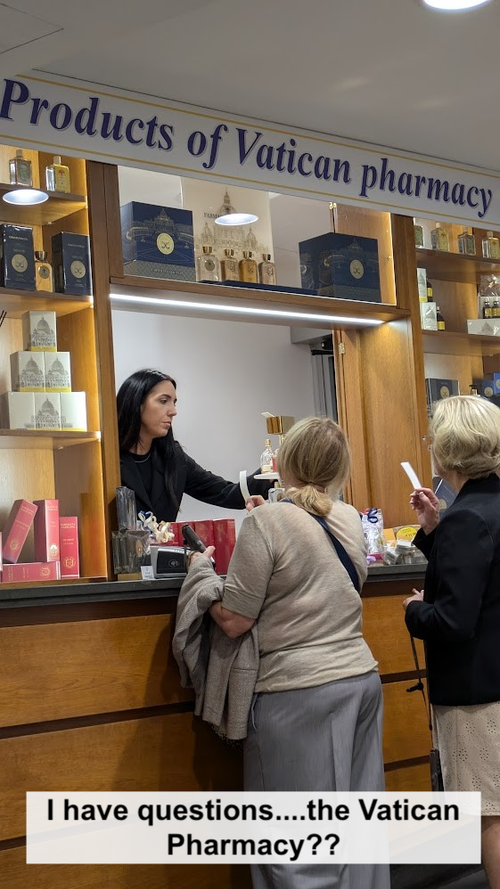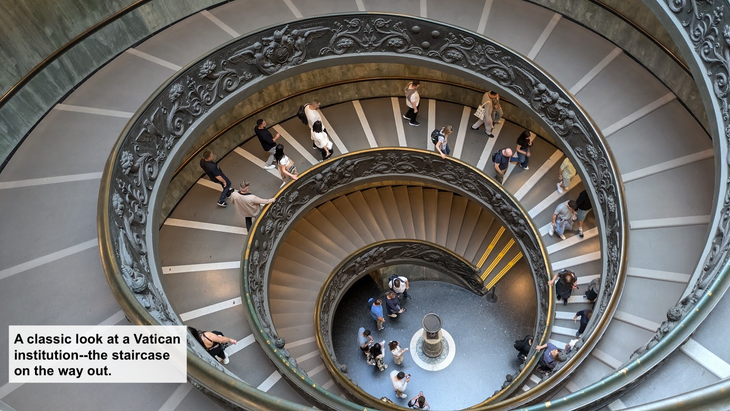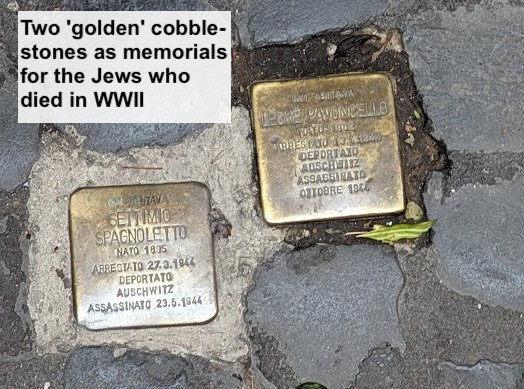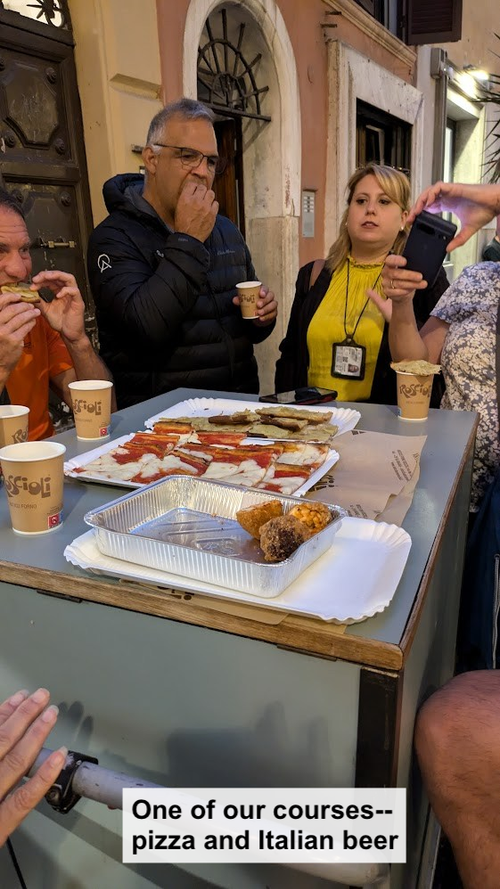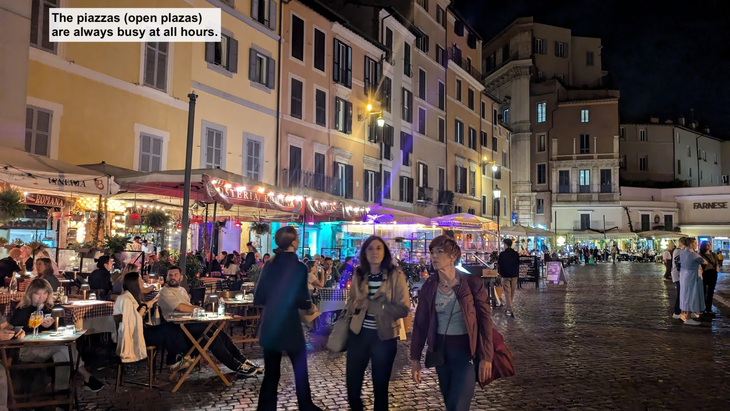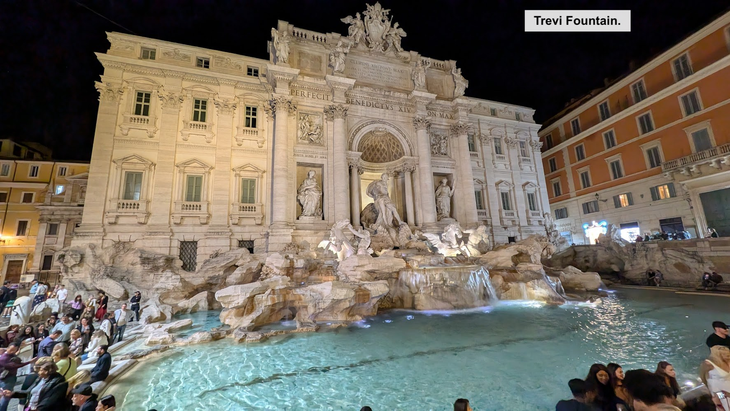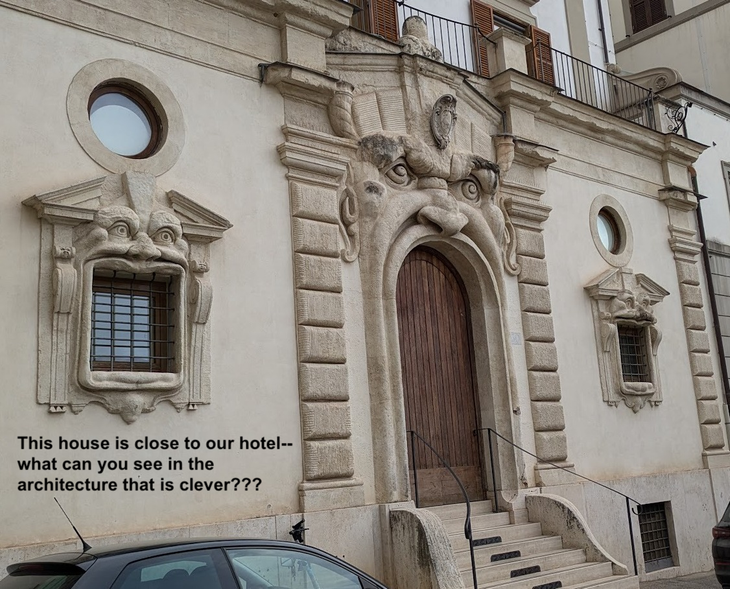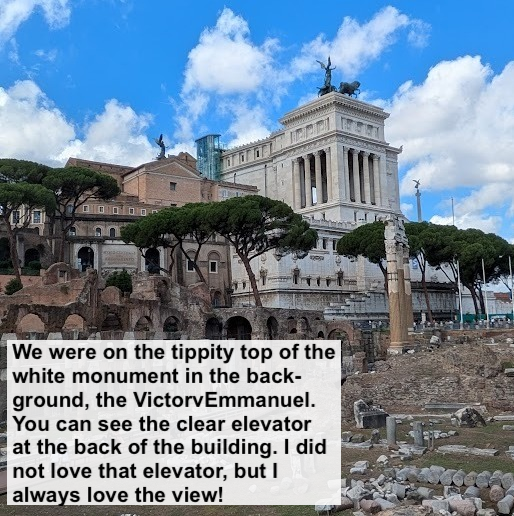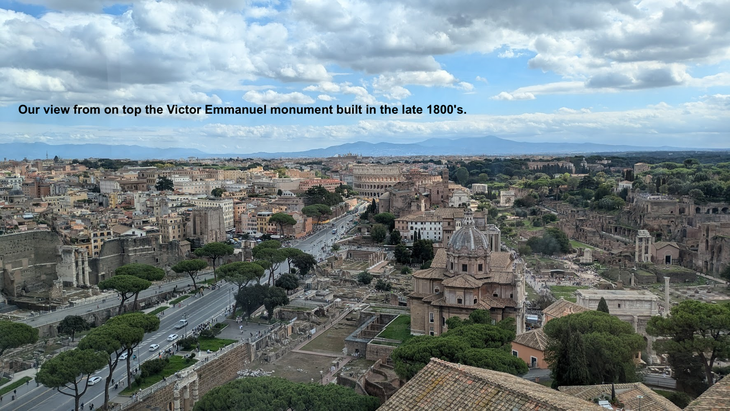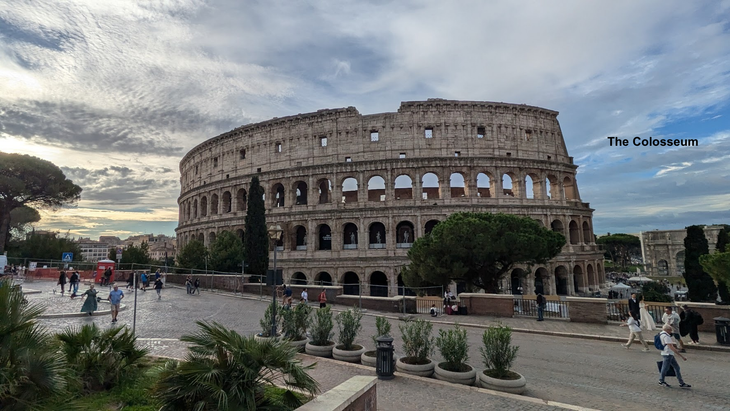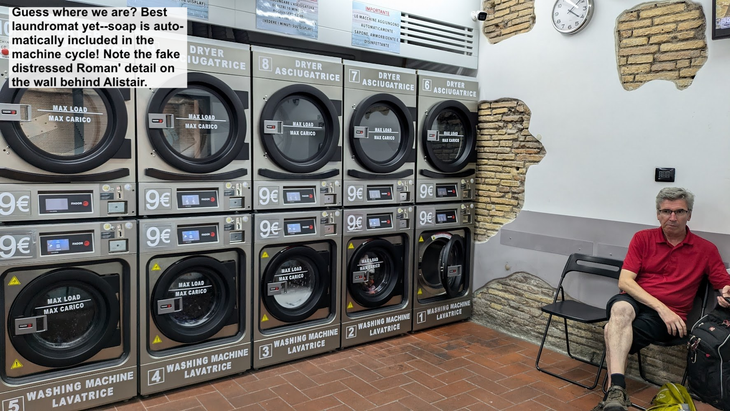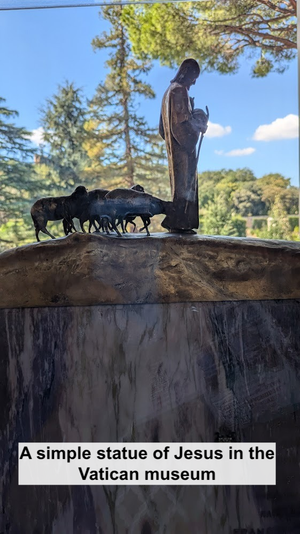29 Blog Post October 2, 2024
Well, the Vatican nearly killed me, and this is the second time.
I was blessed to travel to Rome with both of my sons in 2010. Alex was studying here, and Christian and I joined him the day after Christmas for a week of traveling. The boys and I didn’t take an organized tour, but we walked through St. Peter’s Basilica and then went to the Vatican Museum. It was just too long and by the time we got to the Sistine Chapel, we were overdone with frescoes and marble busts of dignitaries and all the other art work owned by the Vatican, and we couldn’t absorb any more information. We were exhausted and the Sistine Chapel was the only thing standing between us and freedom because it’s the last part of any visit to the Vatican Museum. We didn’t stay long in the Chapel.
Fast forward to yesterday, October 1, 2024. The day started with cool, beautiful weather and we trekked our 30 minutes to meet our guide, a perky and incredibly knowledgeable woman with an art history background—very appropriate for the tour. But the Vatican had shortened the hours the Basilica was open, tourists poured into the area and we waited on line for at least an hour just to clear security (and we had “Jump the Line” tickets!)
Once again, I was awed by the incredible array of masterpieces in the Basilica and certainly in the Museum, but I admit to some spiritual queasiness about an institutional church owning all these works of art. Part of the argument in favor of having the Church own them is that they are being kept safe and well-maintained and they are available to the public. But the vast array of artifacts and artwork makes me wonder about the purpose of the institutional church, and from my perspective, owning millions or even billions of dollars of art work creates a conflict between ownership of priceless art and the mission of the church to care for the least, the loss and the left out. I’m not saying that the Church isn’t doing those things as well, but honestly, it leaves me conflicted.
In any case, the coolness of the day evaporated, and the temperatures rose in the Basilica and the Museum as we toured, and more and more people clustered together, and yes, Alistair and I both walked the 500+ steps up to the dome of the Vatican, so by the time we got to the Sistine Chapel, I had the same experience, only worse. I just had to get out. Alistair offered to get a taxi, but I thought I was ok to get back to our hotel by walking. But the 80+ degree heat, the length of the walk and oh yes, the nearly 200 steps we have to climb just to get to our hotel loomed ahead, and I barely made it back—but I did! I collapsed, which sounds dramatic, but I was simply and completely exhausted and probably dehydrated as well. So when I got back to our hotel I fell asleep for two hours and woke up feeling much, much better.
So much better that we were able to take our Food Tour of Rome last night which was basically a progressive dinner that began in the Jewish Ghetto, and wove through various neighborhoods in that area, beginning with the story of the pogrom against the Jews in October, 1943 during WWII, something we also learned about in Venice. In this neighborhood, more than 1000 Jews were sent directly to Auschwitz and only 16 returned alive. (I’ve included a picture of the golden cobblestones that were placed as a reminder of those lost.)
The Ghetto area is now rich in culinary experiences from kosher foods to handmade pastas, and we sampled them all! Each place had a specialty—in the kosher neighborhood, deep fried artichokes were served to us. Artichokes are a Rome specialty, and they grow well all around the city. Then we had an anchovy salad made with fresh anchovies (not the salt-preserved ones Americans use on their pizzas), as well as fresh grilled zucchini and cherry tomatoes tossed in fresh olive oil; next we had true Roman pizza, including potato pizza, that features a crispy crust, not a chewy one, then we had homemade pastas including cacio de pepe, a simple pasta made with pecorino cheese and pepper—and of course there was wine to go with every course. Finally we walked to two additional restaurants and had two desserts—tiramisu and gelato, both staples of the Italian menu. I know, pinch me! We are learning that tours can give us a quicker way to learn about an area rather than trying to do it all on our own, and that includes the food of Rome.
The theme that continues to thread through this sabbatical is the mingling of spiritual/religious and cultural experiences from Iona to Rome.
We began with the quietness of an island dedicated to the presence of God in the simplest of ways that combines the wildness of the sea and the open land into a prayer that we prayed with our whole bodies as we trekked outside for miles, breathing salt air and tuned into the Holy Spirit as both agitator and guide, and I felt again the deep grief of loss.
Rome is another heart-reminder city since I was here with both boys as well, and I can remember specifics of our trip here. I am grateful that we took that trip so that those memories can accompany me here, but Rome is so busy and full of historic information and churches and food and noise—Italians are loud!! Rome is harder for us to manage than Iona because Rome is more complex.
So this sabbatical no longer feels as straightforward and simple as it did when we started, but we chose our beginning intentionally, with the pared down, clear experiences of Mull and Iona that are carried with us even as we dodge tiny cars and rogue motorcycles roaring past on the streets of Rome, as we walk by the finest of stores with familiar names—Cartier, Tiffany, Rolex—as we walk into some of the 900 churches here in Rome to stop and pray, as today as ewe toured the Colosseum which, despite the plans of the Romans who built it, did not last forever. Monuments to victories, to emperors, to Popes, to saints—this is not a simple world, but it is a beautiful mélange of experiences.
And the good news is—the Vatican did not manage to do me in, but it did exhaust me. We are not far from the time when we will have no agenda other than to spend time on the coast of Italy in late October, and then head to Greece. We have no tours booked after that, no specific plans made, and my hope is that simplicity circles back, acts as a reminder to dwell, to breathe, to pray, and to eat, always to eat, to taste, to be nourished on so many levels.
It's close to 11 pm in Rome, the windows are open, and I can hear the sound of plates and glasses clinking—even on a weeknight restaurants stay open until midnight and people eat their main meal after 8 pm. Unexpectedly, a saxophonist starts playing a beautiful, complicated piece of music I don’t recognize, so I stop typing and close my eyes to listen as the music slides up to our window. A few minutes later, the music stops. A momentary oasis. A Roman lullaby.
Benedizioni e grazia (blessings and grace),
ML+
